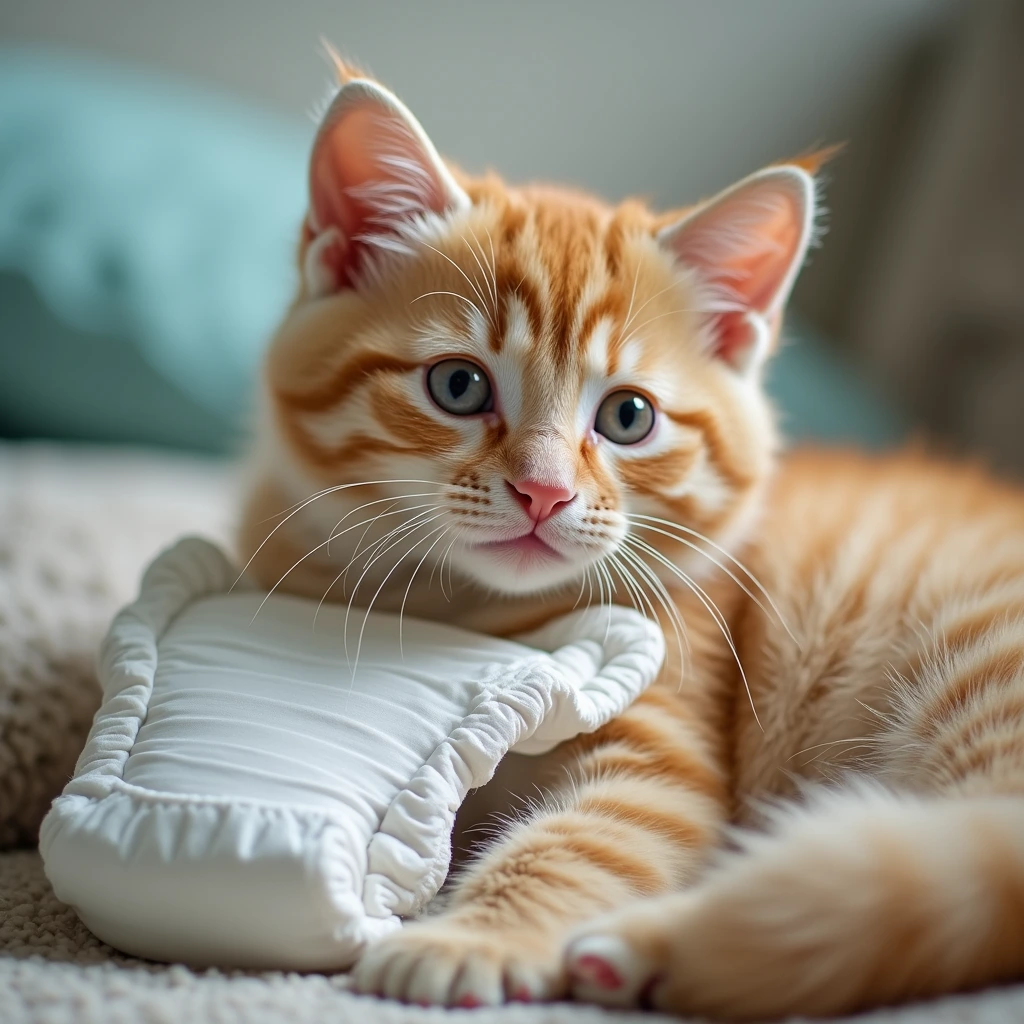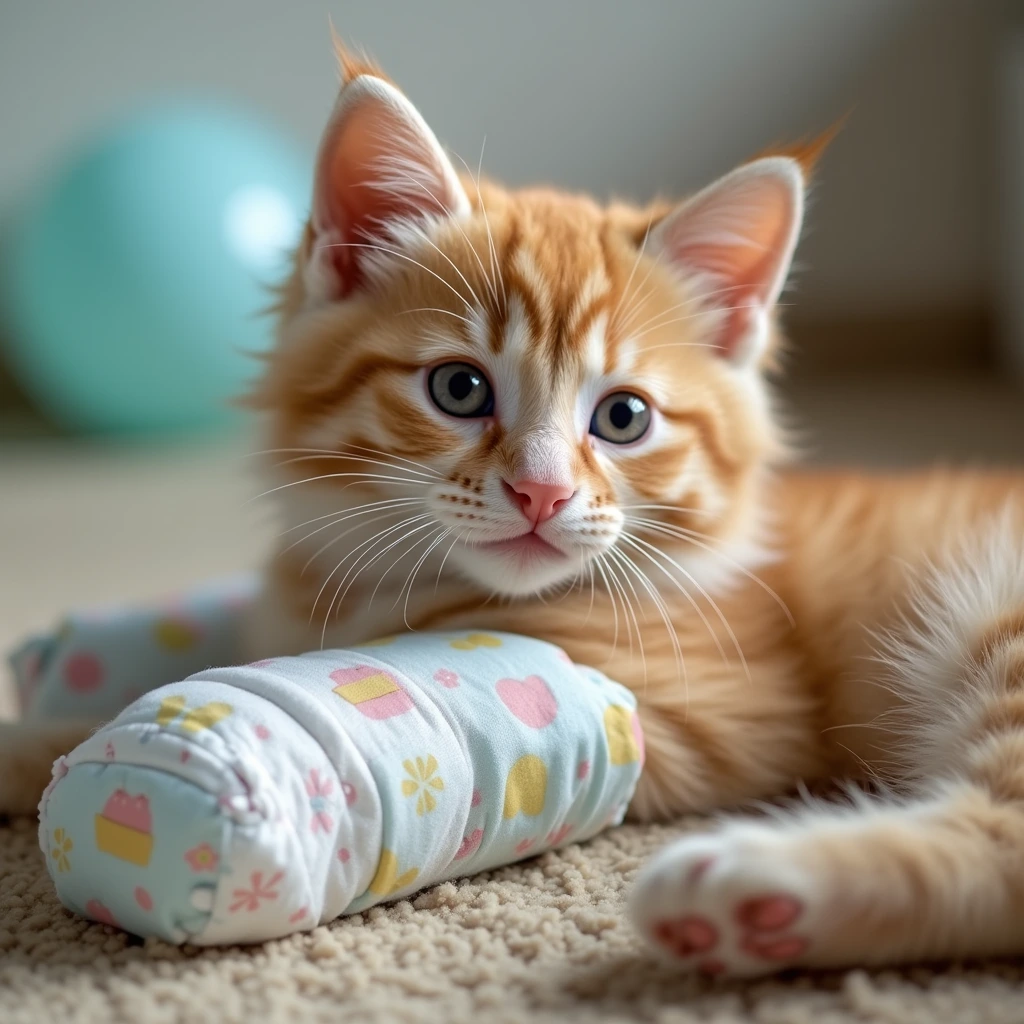diapers for cats As a pet owner, you likely never imagined needing diapers for your beloved cat. However, when your feline friend faces incontinence, recovers from surgery, or deals with age-related issues, diapers can become a necessary solution. In this guide, you’ll find everything you need to know about diapers for cats, from when they are needed to how to choose the right type and care for your cat while they wear them.
Table of Contents
What Are Diapers for Cats? diapers for cats

Cat diapers are designed specifically for felines dealing with incontinence or other health issues. Whether due to aging, surgery, or medical conditions, some cats experience difficulties controlling their bladder or bowels, and diapers can help prevent messes around your home. These diapers come in different styles and materials, but their primary goal is to keep your cat comfortable and your living space clean.
Types of Cat Diapers
When choosing a diaper for your cat, you’ll come across two main types: disposable and reusable. Each has its pros and cons, depending on your cat’s needs and your personal preferences.
- Disposable Diapers: These are convenient for short-term use or for those who prefer a hassle-free option. Simply use and toss them once they’re soiled. However, they can become costly over time.
- Reusable Diapers: Made from washable materials, these are more environmentally friendly and cost-effective in the long run. They’re best for cats needing long-term diaper solutions.
| Type | Pros | Cons |
|---|---|---|
| Disposable | Convenient, single-use | Expensive over time, less eco-friendly |
| Reusable | Cost-effective, eco-friendly | Requires washing after each use |
When Should You Use Diapers for Cats? – diapers for cats
Cat diapers aren’t something you use without a valid reason. You’ll want to ensure that your cat truly needs them before making the transition. Below are common situations where diapers may be essential.
Medical Conditions
Incontinence is often a result of underlying health issues such as urinary tract infections, kidney disease, or even neurological conditions. Cats with feline lower urinary tract disease (FLUTD) might also benefit from diapers, especially if they struggle with frequent urination. Post-surgery recovery may also require temporary use of cat diapers if your pet can’t move comfortably to use the litter box.
Behavioral Issues
Sometimes, cats develop behavioral problems that cause them to urinate outside the litter box. Spraying is a common issue, especially in unneutered males. If you’ve tried behavioral interventions without success, diapers could offer a solution to prevent messes.
Temporary vs. Permanent Use
Not every cat will need diapers permanently. For example, if your cat is recovering from surgery, a temporary diaper solution might be all that’s needed. However, senior cats or those with chronic conditions may require long-term use.
How to Choose the Right Diaper for Your Cat – diapers for cats
Once you’ve determined that diapers are necessary for your cat, the next step is selecting the right type. Several factors come into play when choosing the most suitable diaper.

Factors to Consider – diapers for cats
- Sizing: Getting the correct size is crucial for your cat’s comfort and the diaper’s effectiveness. Measure your cat’s waist and refer to the manufacturer’s sizing guide to ensure a snug fit.
- Material: Look for breathable materials that won’t irritate your cat’s skin. Absorbency is another key factor, particularly if your cat is dealing with frequent urination.
- Tail Hole Options: Some diapers come with a hole for your cat’s tail, while others cover it completely. Cats with long tails may benefit from having their tail out, while a tail-free option can provide extra leak protection.
- Leak Protection: Look for diapers that feature strong elastic bands or secure closures to prevent leaks.
Comfort and Mobility – diapers for cats
While protection is important, so is your cat’s comfort. A diaper should be snug but not restrictive, allowing your cat to move freely. You may need to try a few different types to find the one your cat tolerates best.
Cost Comparison
When considering costs, it’s worth looking at the long-term financial implications of using diapers. Disposable diapers are typically more expensive over time, while reusable ones require an upfront investment but save you money in the long run.
How to Put Diapers on a Cat – diapers for cats
It’s natural to feel a bit apprehensive about putting a diaper on your cat for the first time. However, with some patience and the right technique, it can become a smooth process.
Step-by-Step Guide
- Prepare your cat: Make sure your cat is calm before attempting to put on a diaper. You can gently pet them or offer treats to reduce anxiety.
- Position the diaper: Slide the diaper under your cat’s hind legs, making sure the wider part goes around their waist.
- Secure the straps: Fasten the straps around your cat’s waist, ensuring a snug but comfortable fit. Adjust the tail hole, if applicable, to avoid discomfort.
- Check for fit: Make sure the diaper is secure but not too tight, as this can cause irritation or restrict movement.
Caring for a Cat Wearing Diapers – diapers for cats
Now that your cat is wearing diapers, maintaining proper hygiene and care is essential to prevent infections or skin irritation.
Hygiene and Skin Care
Regularly changing your cat’s diaper is crucial. Leaving a wet or soiled diaper on for too long can lead to diaper rash or more serious skin infections. Use vet-approved ointments if you notice any redness or irritation.
Signs Your Cat Needs a Diaper Change
Monitor your cat for signs of discomfort, such as excessive licking around the diaper area, meowing, or attempting to remove the diaper. If you notice any leaks or wet spots, it’s time for a diaper change.
FAQs About Diapers for Cats
Do cats mind wearing diapers?
At first, your cat might be resistant or uncomfortable. However, with time and positive reinforcement, many cats can adjust to wearing diapers, especially if it improves their quality of life.
How long can a cat wear a diaper?
Typically, you should change your cat’s diaper every few hours, depending on their needs. Leaving a diaper on for too long can lead to skin irritation.
Can cat diapers be used for kittens?
Yes, but you’ll need to find diapers specifically designed for smaller cats or adjust regular diapers to fit them.
Are there alternatives to cat diapers?
In some cases, you might try using absorbent potty pads or retraining your cat to use the litter box if behavioral issues are the cause.
Tips for Maintaining Your Cat’s Health and Well-being
Wearing diapers doesn’t mean neglecting other aspects of your cat’s health. Monitoring their hydration and diet can have a direct impact on their urinary health and comfort.
Monitoring Hydration and Diet
Ensuring your cat drinks enough water is essential, especially for cats suffering from urinary issues. You may also want to consider adjusting their diet to promote urinary health. Consult your vet for recommendations on specialized diets or supplements that can support urinary tract function.
Conclusion
Diapers for cats can be a lifesaver in managing your pet’s health and well-being, especially for those dealing with medical conditions, behavioral issues, or age-related concerns. With the right type of diaper, proper care, and attention to your cat’s overall health, you can ensure they remain comfortable and happy while maintaining a clean home environment.
Remember to always consult with your vet before making any major decisions about your cat’s care. If you’re ready to explore diaper options for your cat, check out reputable brands and consider the needs of both you and your feline friend.
How to Choose the Best Cat Diapers: Tips and Recommendations

